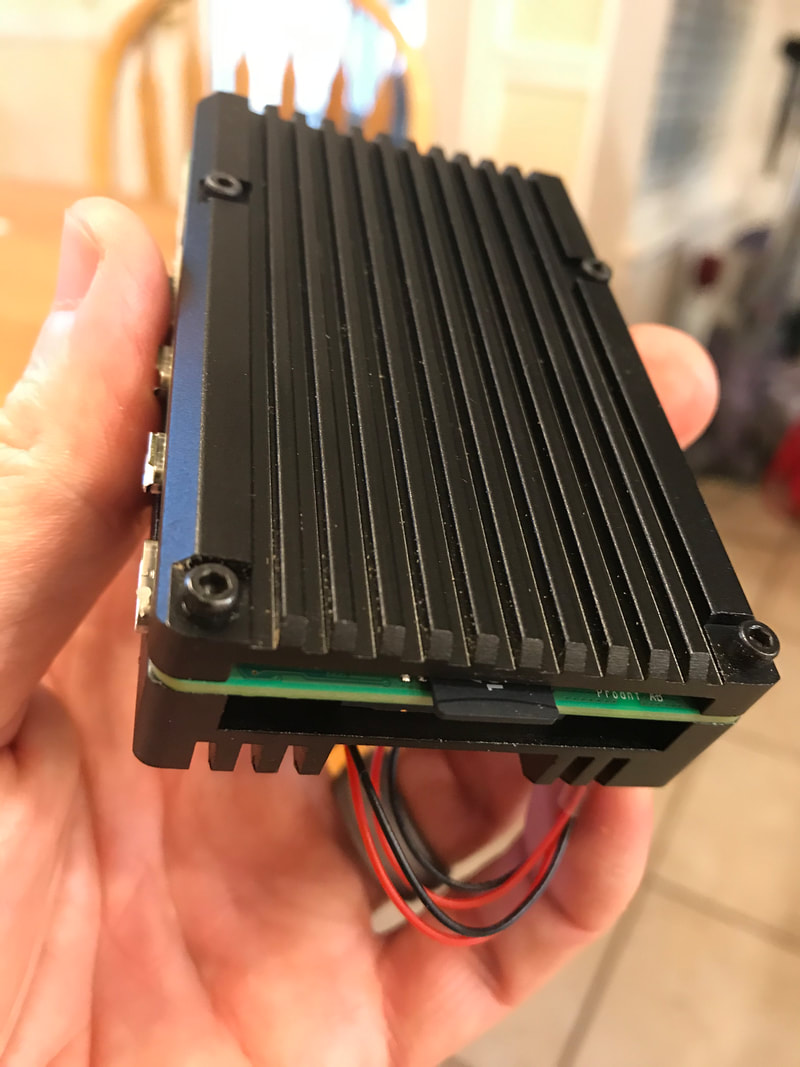|
The week started out looking for that perfect screw. You know, the one that fits just right, long enough to get good engagement, but not too long. In this case I was looking for screws to mount my Pi's. My Pi's have a heat sinking case and are put together with a mystery screw. The case came from Canada. Since I couldn't immediately identify the thread, I assumed it was metric. I even ordered 100 screws based on a trip to Home Depot and comparing the sizes. I was disappointed when the metric screws arrived as they really didn't fit. Lucky for us, we have Ed on our team. He had all the tools needed to play the 'what screw is this?' game. After trying to match lots of screws and using thread gauges and calipers, we finally discovered it was a English #3-56. Not the most common screw around based on the scarcity of them in Ed's lifetime collection. Last week, the goals were to continue on with the software clean up and start measuring the new batteries for voltage consistency. Software cleanup sometimes feels like an endless job. The more we use the system, the more we encounter things that would help us find bugs faster, or automate repeated tasks. This week, I worked on automated start up and ability to collect all the system messages of various levels of criticality. With that functionality available, I can start on a 'status' monitor, to quickly diagnose which sub-system is complaining in case of problems. I started work on producing a video for PID tuning. However the experimental results aren't repeatable so I need to investigate why. Bruce and his sons showed up with masks on to work on figuring out exactly how the batteries could fit and be mounted in the Miata. We started by removing the seats and carpet to see what kind of space we had. We reluctantly concluded that putting the batteries under the seat would end up raising the sitting position by 2-3 inches and that would be a problem for the taller drivers. The top of the windshield would be blocking our view. This directs us to explore more options on where to mount the batteries. An obvious option is to place batteries the where the current 12 gallon fuel tank is. We'll have to remove the current tank to measure how much room there is and how we'd mount batteries. Those of you who know Miata's will realize this means dropping the rear sub-frame. Other options are to mount some of the batteries up front with the Leaf motor. The Leaf motor plus inverter weighs 160 pounds. According to the internet, the Miata 1.8 liter motor weighs 290 lbs, so that leaves us with some extra weight for batteries which are about 50lbs apiece as currently configured. More thinking required. Doug, Ed and I spent time on the motor coupler. I ordered a 1970 fiat spider clutch which has 20 splines, just like the Leaf motor after Doug spotted a message on DIYElectricCar. The clutch, a $50 gamble, arrived the next day, despite me opting for the cheapest shipping options. I installed it and performed an experiment to find out the angular backlash. That is, quantify how well the clutch disk mated to the Leaf motor. To do this, we measure 3 sides of a triangle, and then calculate the angle. I learned the formula to calculate this about 40 years ago. I can still remember the pretty girl's name who sat in front of me in that High School class, but definitely didn't remember the details on the formula. I'm so grateful for Google and those who teach math online. After the skull sweat, we determined the Fiat disk has an angular backlash of 1.09 degrees and a .005 coaxial movement. You can see the backlash demonstrated in the video as the motor comes to a stop. For comparison, one of Doug's clutches, used in a 600 hp racing application has 0.41 degrees of angular backlash and somewhere in the range of .001-003 coaxial movement. We'll continue to research this until we find an acceptable solution. Ed took the time to educate me on what the various tolerances were on couplings depending on the type of fit and use. This will save money as some of the tolerances don't have to be as tight as I originally thought.
In other news, I tested 200 of the newly arrived batteries with every single one being within .004 volts of each other.. :) Joe has a little more work to do before releasing the first version of BMS boards I'll use on the mini-pack. We'll be able to get some experience charging/discharging the batteries with feedback from the BMS. Next week, I'll continue the software cleanup and enhancements. We'll also perform some car preparations, draining the fuel and de-greasing portions of the car to remove the gas tank. I'll pick up the BMS boards from Joe and will integrate them in the mini-pack. Thanks for reading! Hope you enjoyed it as much as I did and stay healthy!
0 Comments
Leave a Reply. |
AuthorBill likes cars that understand the 'go fast now' pedal. Archives
May 2022
Categories |
Proudly powered by Weebly


 RSS Feed
RSS Feed